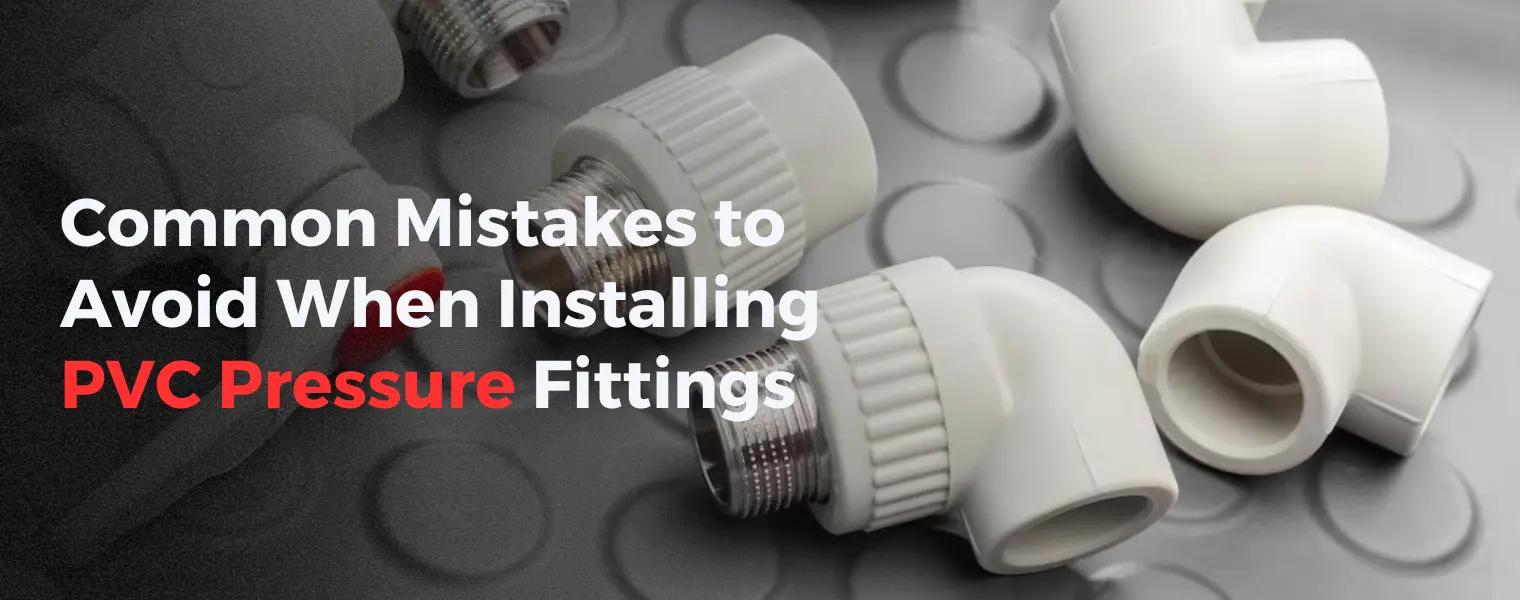
PVC pressure fittings are essential components in plumbing and industrial systems, known for their durability and versatility. However, like any other installation process, working with PVC pressure fittings can lead to errors if not done correctly. In this blog post, we'll explore some common mistakes to avoid when installing PVC pressure fittings to ensure a leak-free and efficient system.
One of the most crucial aspects of any plumbing project is planning. Failing to plan adequately can result in mismatched fittings, incorrect sizes, and unnecessary trips to the hardware store. Take the time to create a detailed plan that includes the types and sizes of PVC fittings you'll need, as well as a clear layout of your system.
Using the wrong tools can lead to poorly cut or damaged PVC pipes and fittings. Always use a sharp PVC pipe cutter or hacksaw to make clean, straight cuts. Avoid using utility knives or scissors, as they can cause rough edges that lead to leaks.
After cutting PVC pipes, it's essential to deburr and chamfer the edges. Deburring removes any rough spots left after cutting, while chamfering bevels the pipe's end slightly. These steps ensure a snug fit with the fittings and reduce the risk of leaks.
Primer and cement are crucial for creating strong, leak-free joints. Skipping these steps or using them incorrectly can result in weak connections. Always follow the manufacturer's instructions for applying primer and cement, and make sure the surfaces are clean and dry before joining them.
Over-tightening PVC fittings can lead to cracks or damage. Tighten them only until they are snug, and avoid using excessive force. If you encounter resistance, it's better to check for alignment issues or debris inside the fitting.
The order in which you glue PVC fittings matters. Start with the pipe and apply cement to both the pipe and the fitting. Then, insert the pipe into the fitting and give it a slight twist to ensure even distribution of the cement. Holding the joint in place for a few seconds allows it to set properly.
Once PVC fittings are joined, they need time to cure properly. Rushing to pressurize the system before the cement has fully set can lead to leaks. Follow the manufacturer's recommendations for cure time, which typically ranges from 15 minutes to 24 hours, depending on factors like temperature and humidity.
Improperly supported pipes can sag, causing stress on joints and fittings. Make sure to provide adequate support for PVC pipes, especially in horizontal runs and long spans. Use pipe straps, hangers, or clamps to secure pipes and prevent unintended movement.
Installing PVC pressure fittings correctly is essential for ensuring the integrity and longevity of your plumbing or industrial system. By avoiding these common mistakes and following best practices, you can achieve leak-free connections, increased efficiency, and peace of mind knowing your system is built to last. Remember that when in doubt, consult with a professional or refer to manufacturer guidelines to ensure your PVC pressure fittings are installed correctly. Polyfab provides the best PVC pressure fittings , Contact us to know more.